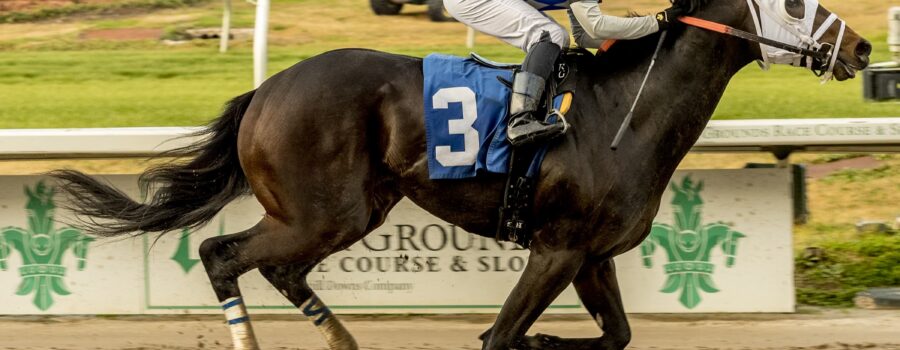Most breeders still think the stallion makes the difference.
But following stallion rankings or sales trends often leads to the same place: average foals that don’t stand out on the track.
If your goal is to breed racehorses that can compete, not just look good in a catalog, your first move should be different. Start with the mare.
In this article, you’ll learn why mares are the most overlooked advantage in breeding and how serious breeders are using them to produce stronger, more durable, more capable runners.

The Myth That Holds Breeders Back
Many breeders believe stallions are the gateway to class.
This creates an overemphasis on stallion stats and superficial appeal.
- Selecting from stallion lists skips the most important question: what does your mare need?
- Two elite horses don’t always produce an elite foal. How they combine matters.
- The influence of the mare often shows up earlier and lasts longer.
Benefit: Focus on what actually shapes the foal. Starting with what you already control.
A mare bred to three different stallions, all well-known names, produced three similar, underwhelming foals. Only when the breeder re-evaluated the mare’s physical type and production pattern did the next mating yield a quality runner. The problem wasn’t the stallions; it was the starting point.
Takeaway: When breeders stop making stallion-first decisions, results improve.
Let’s look at how to shift that starting point.
The Mare Matters More Than You Think
Mares shape more than half of a racehorse’s potential.
Yet they’re often evaluated only by their race record or catalog value.
- Mares influence conformation, movement and athletic soundness.
- Long-term performance often traces to the maternal line.
- Effective breeders pair traits. They don’t stack them blindly.
Benefit: Identify where your mare brings strength and where she needs support.
A solid-producing mare who never raced produced multiple winners. Her consistent physical contribution gave her foals a reliable base. Breeders who overlooked her for being unraced missed what mattered most: her ability to deliver.
Takeaway: If you want a better horse, understand what your mare actually contributes.
Next, learn how to measure that contribution.
Start With What She’s Proven
Many breeders focus on catalog pages. But they miss what the foals themselves reveal.
A mare’s production tells you far more than her own race history.
- Track how her foals developed, not just how they sold.
- Identify consistent traits across different matings.
- Don’t overlook soundness, stride and maturity curve.
Benefit: Use known results to guide future matings.
One mare never produced a black type winner. But every foal trained on, stayed sound and earned checks. Her consistency made her a valuable foundation. Her race record wouldn’t have predicted that, but her foals made it clear.
Takeaway: Results leave clues. Pay attention to patterns.
Now we’ll explore how to read those patterns clearly.
Look for Patterns and Gaps
Many breeders keep repeating the same decision and getting the same result.
The issue isn’t the stallions. It’s failing to study what the mare has already shown.
- What traits show up again and again?
- Where have past matches come up short: distance, temperament, soundness?
- Does the mare transmit certain strengths or flaws consistently?
Benefit: Avoid predictable disappointments by seeing what the mare needs.
A well-bred mare produced three foals that all lacked scope. The issue wasn’t the stallion; it was the combination. Switching to a taller, more forward type produced the first stakes performer.
Takeaway: Breeding better horses starts with clearer questions.
The next step is knowing how to answer them.
Understand Her Conformation and Female Family
Every mare leaves a mark. The challenge is knowing what that mark is.
Breeders who skip this step often end up disappointed, year after year.
- Look at body shape, shoulder angle and balance in her foals.
- Study temperament and movement: reactive/calm? light/heavy?
- Use family trends and running types to confirm what needs reinforcement.
Benefit: Choose stallions that complete the picture, not mirror what’s already there.
One branch of a female family consistently produced horses that stayed sound through age five. That trait, often overlooked, made those horses reliable earners. Breeders who noticed it prioritized similar durability in future matings and were rewarded.
Takeaway: Better horses come from better understanding, not better guesswork.
Now we’ll apply that to final mating decisions.
Match for Purpose, Not Popularity
Selecting a stallion based on recent winners or sales success is common.
But performance comes from compatibility, not from who’s trending this year.
- Don’t double down on size, precocity or speed if your mare already has it.
- Find combinations that balance, rather than amplify.
- Match for what will move the foal forward in type, soundness and class.
Benefit: Create foals with the physical and mental tools to perform, not just get noticed.
One yearling stood out not because of who the sire was, but because he looked the part: balanced, athletic and forward. He breezed well, sold well and trained on. The stallion wasn’t the “hot” name, but he brought exactly what the mare lacked.
Takeaway: Purpose-driven matings deliver where it counts: on the track.
Let’s tie it all together.
Why Mare-First Strategy Produces Better Racehorses
When matings start with the mare, the foal’s potential improves.
- Good horses aren’t random; they’re the result of clear planning.
- Race performance often depends on complementary traits, not repeating the same ones.
- Sales trends change, but a racehorse with durability and class always finds value.
Benefit: Increase your odds of producing foals that last, compete and return investment.
The mares behind many top runners weren’t famous, they were well-mated. And the breeders who knew them best got results others missed.
Takeaway: Strong performance starts before conception with smarter planning.
And that planning starts with your mare.
Final Word: Know Your Mare, Breed with Purpose
You only get one foal per mare each year. Make it count.
Skip the shortcuts. Study what your mare actually brings to the table. Plan your matings to fill in the gaps, not follow the crowd.
If you want to breed better racehorses, start by knowing your mare better than anyone else.
Ready to improve your results? Book a free consult now and let’s walk through your mare’s potential together.







Recent Comments